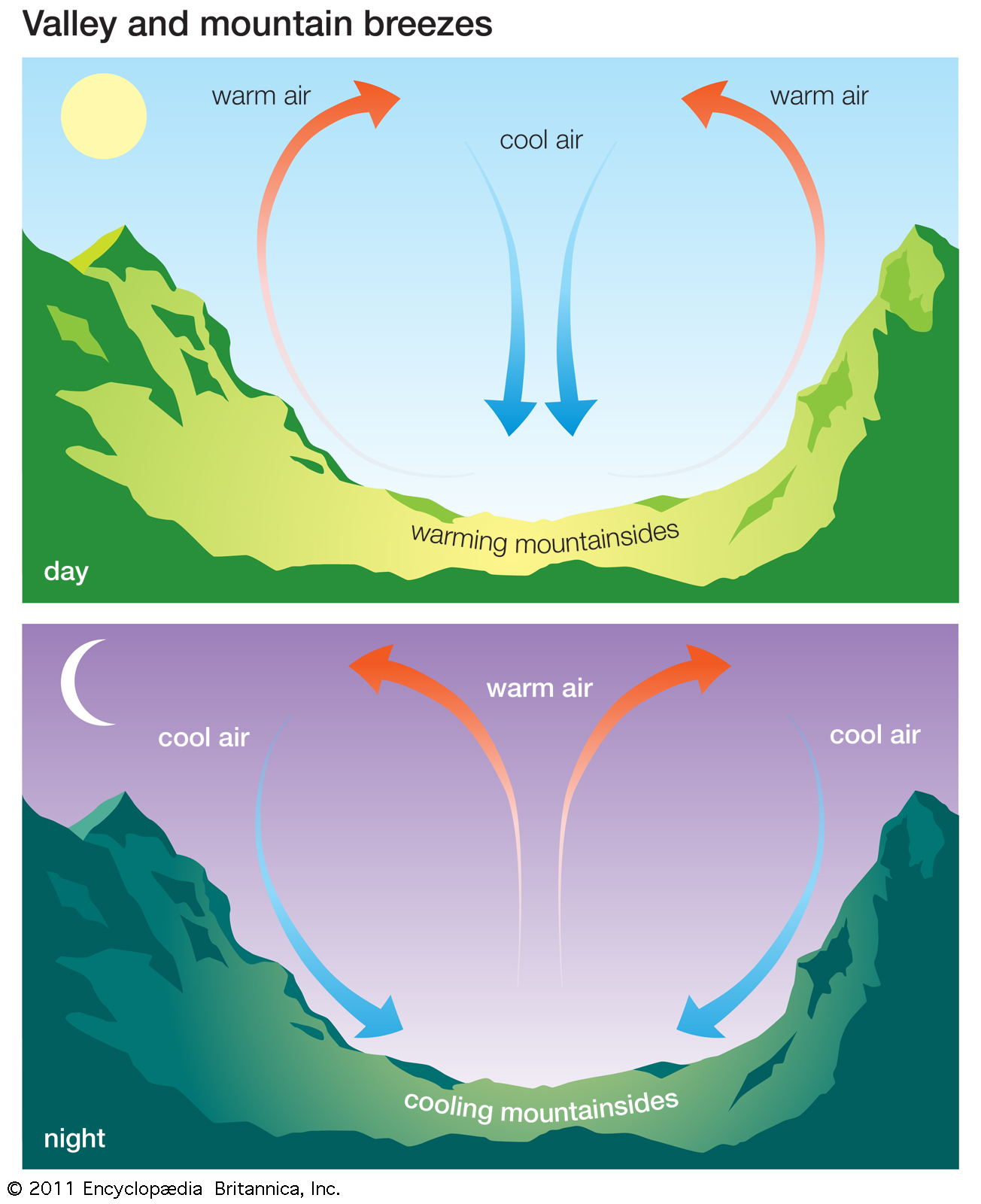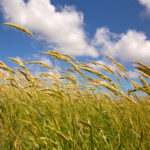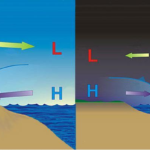In areas where there are mountains and valleys we see a type of wind pattern known as mountain breezes and valley breezes. During the day, the surface of the mountain heats the air high up in the atmosphere, quicker than the valley floor can. As the warmer air expands a low pressure is created near the top of the mountain. This attracts the air from the valley, creating a breeze that blows from the valley floor up towards the top of the mountain. Often birds known as raptors, such as eagles, hawks, condors and vultures, float on these breezes to preserve their energy. This wind pattern is known as a valley breeze.
In the evening, the mountain slopes cool the surrounding air more quickly than the air found lower in the atmosphere. This creates a high pressure as air becomes more densely packed. The resulting high pressure causes winds to blow down the mountain towards the valley floor. This type of wind pattern is known as a mountain breeze.
Thus, in the daytime we typically see valley breezes as winds blow from the valley up towards the mountains. In the night we often see mountain breezes as winds travel from the mountains down towards the valleys.






